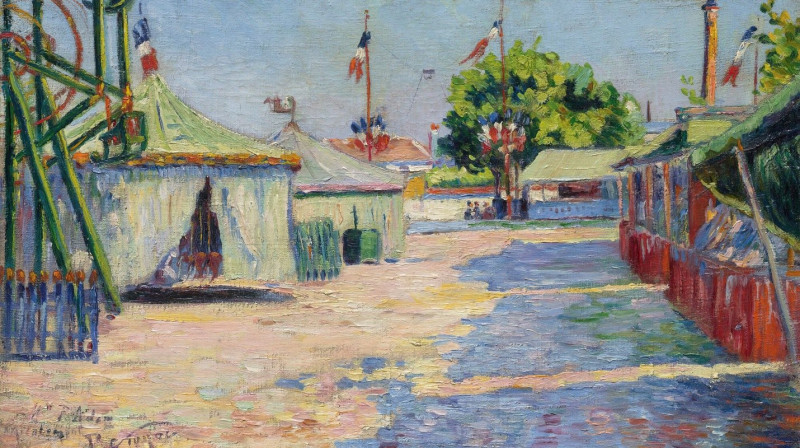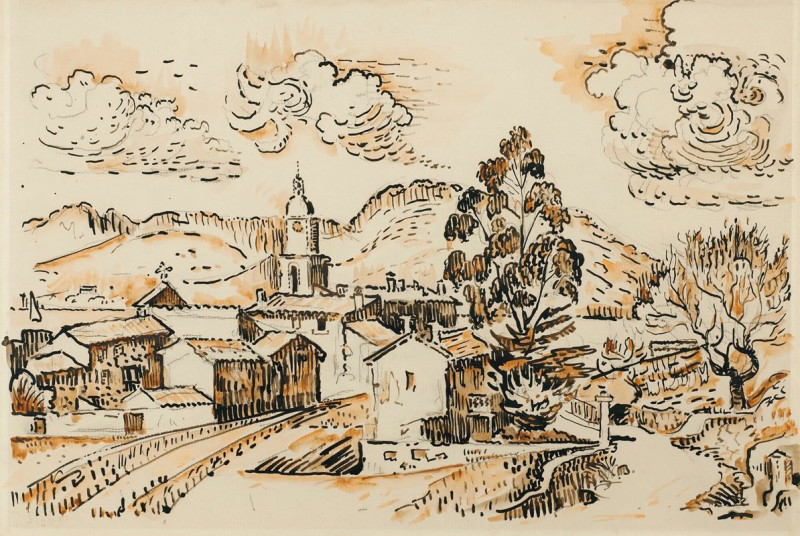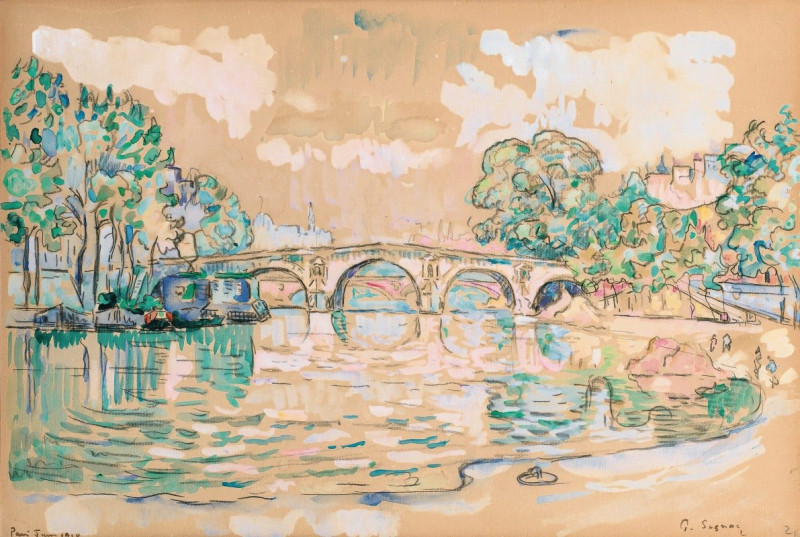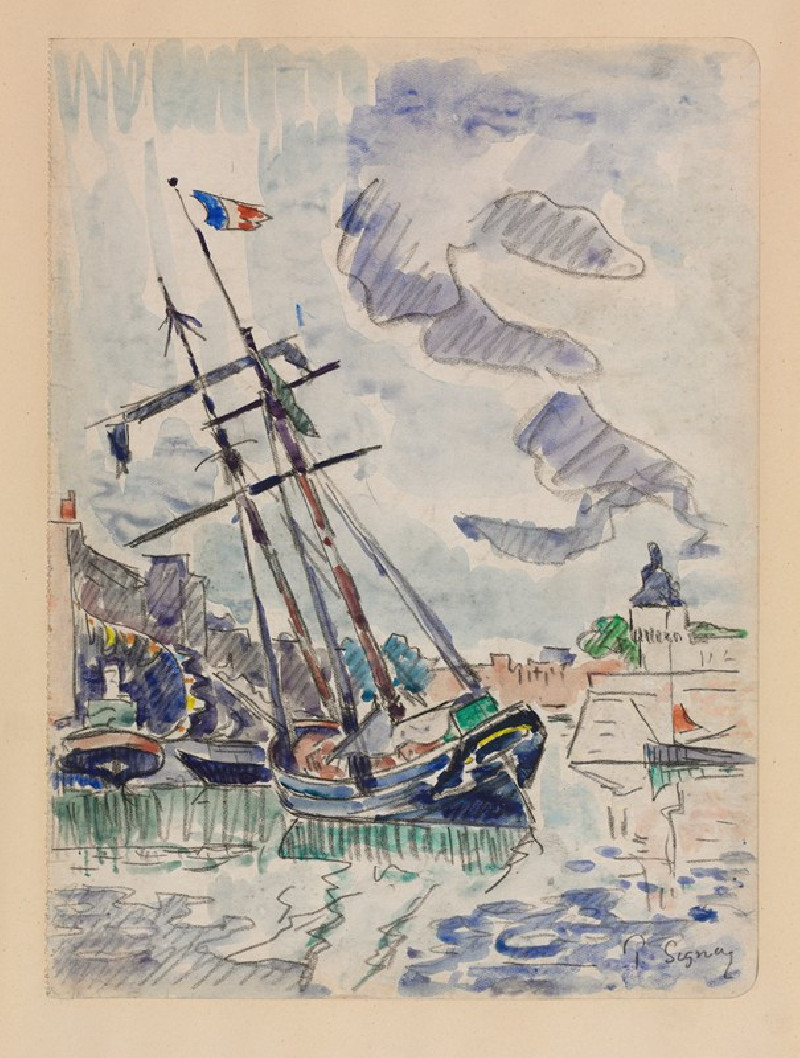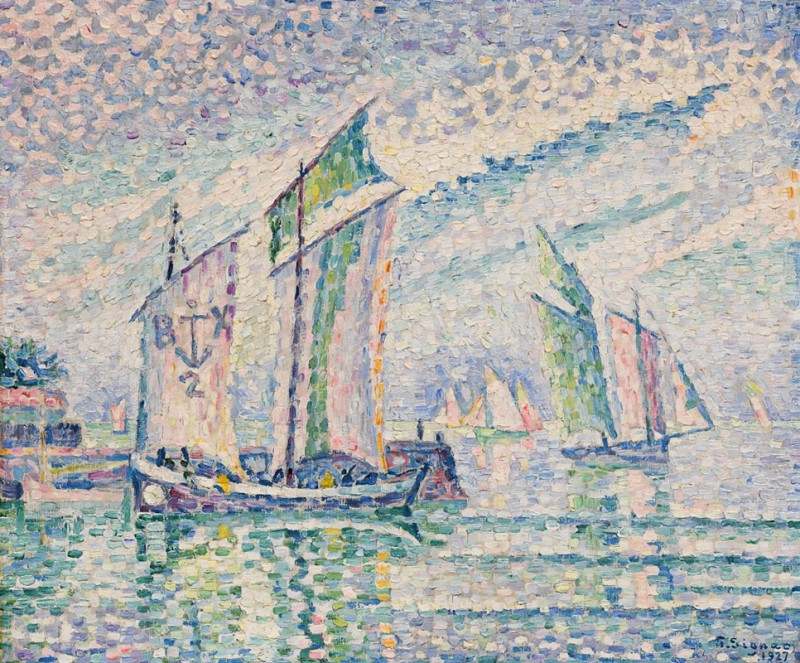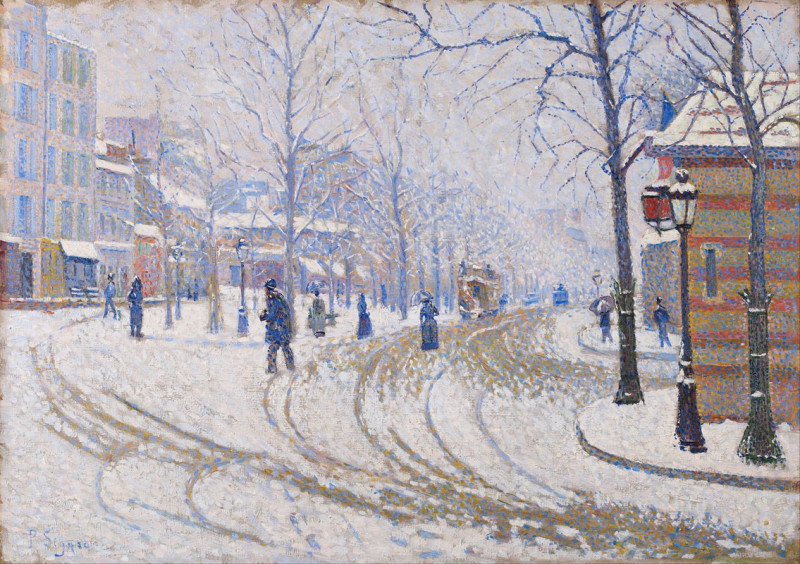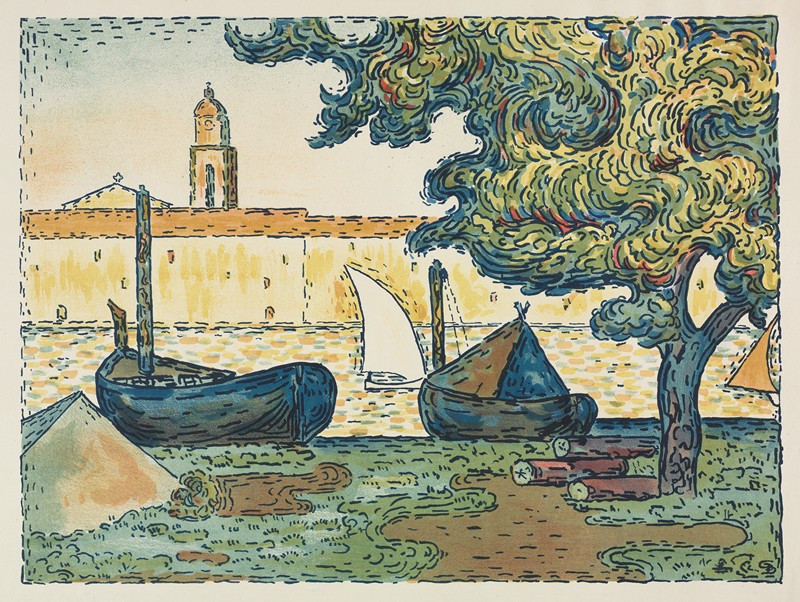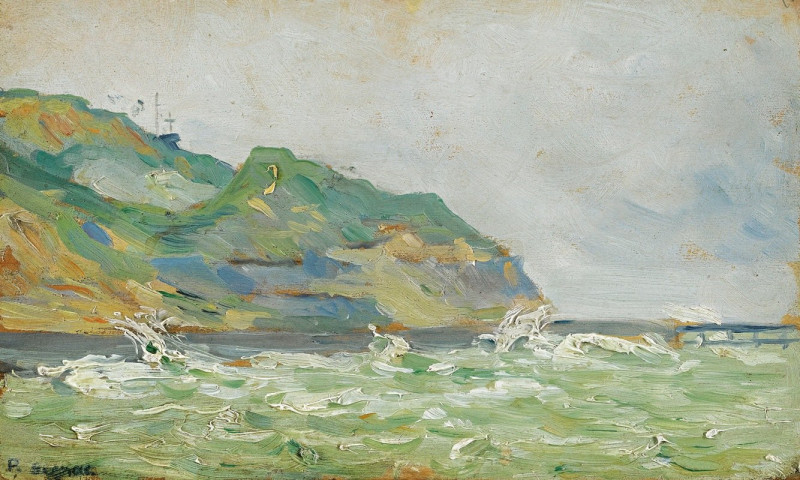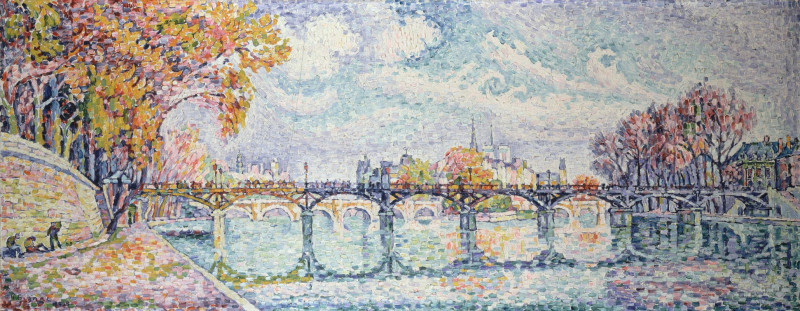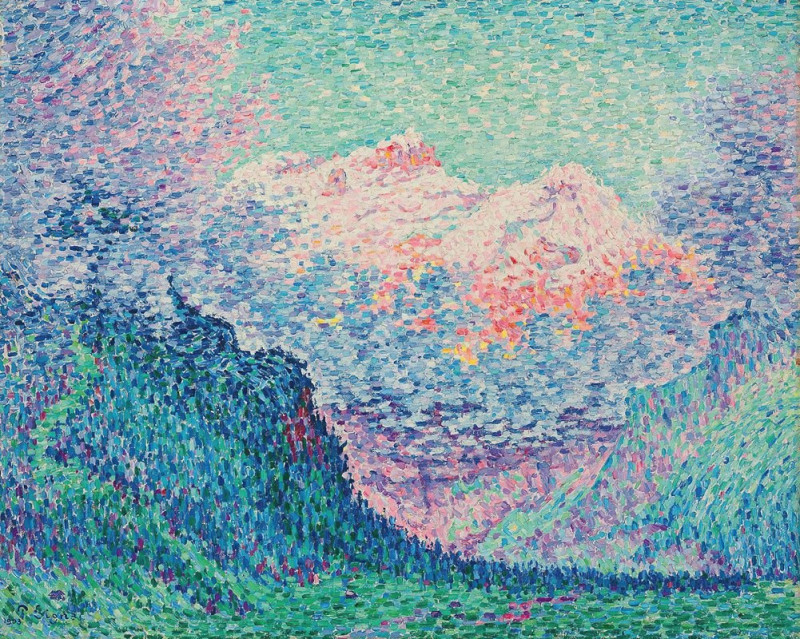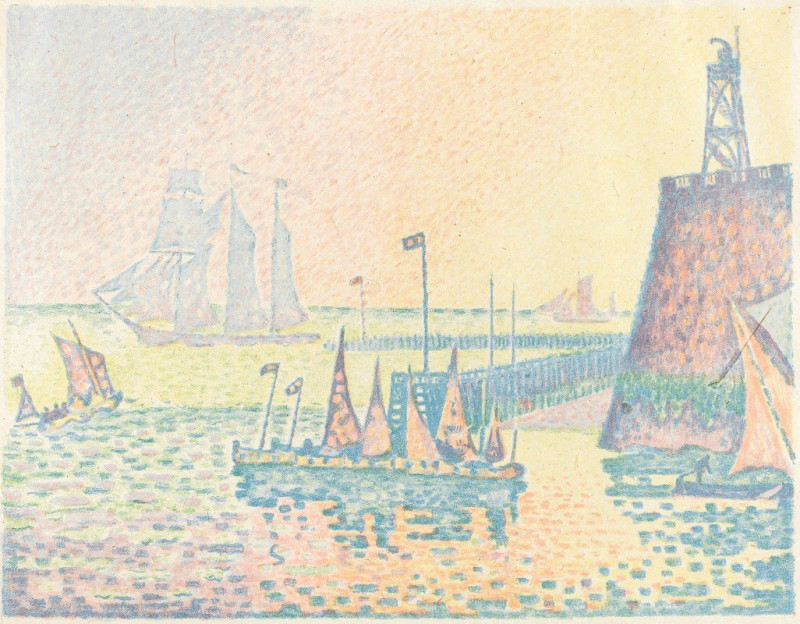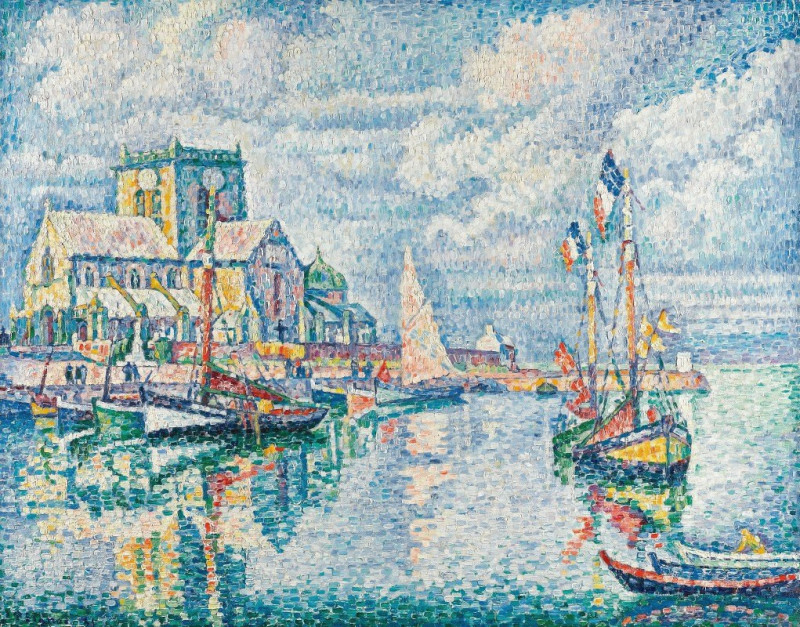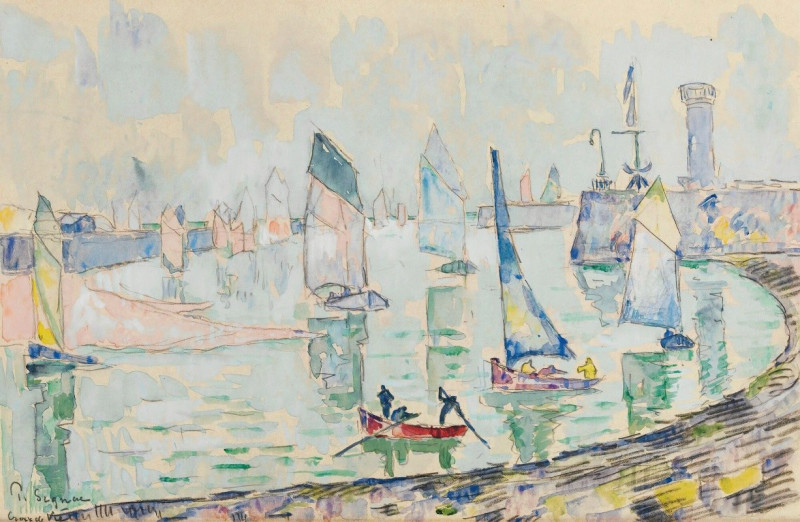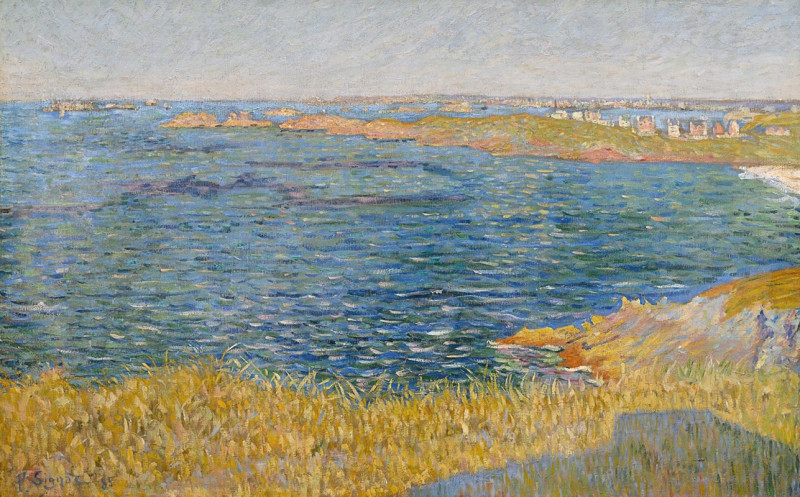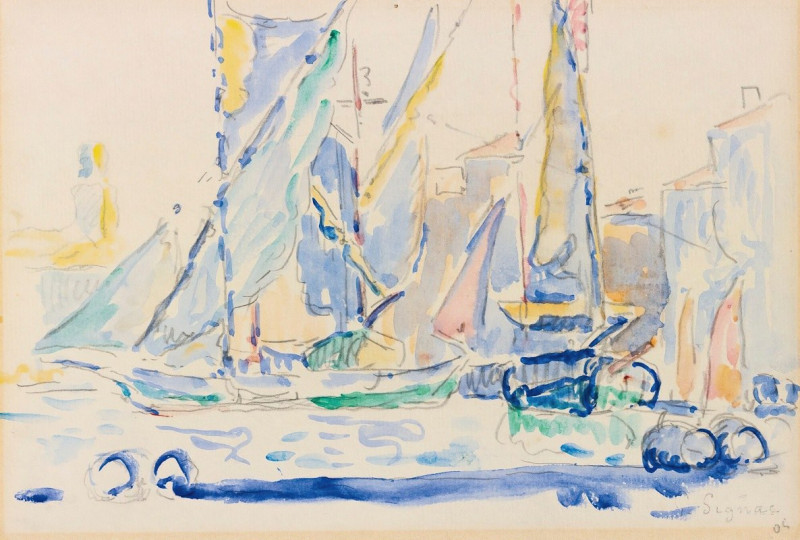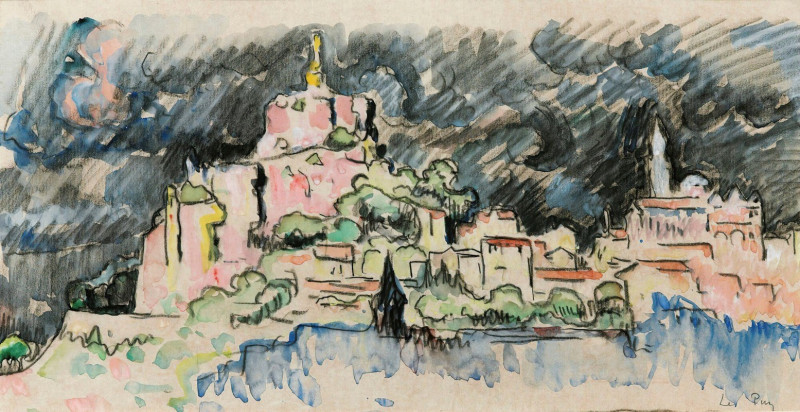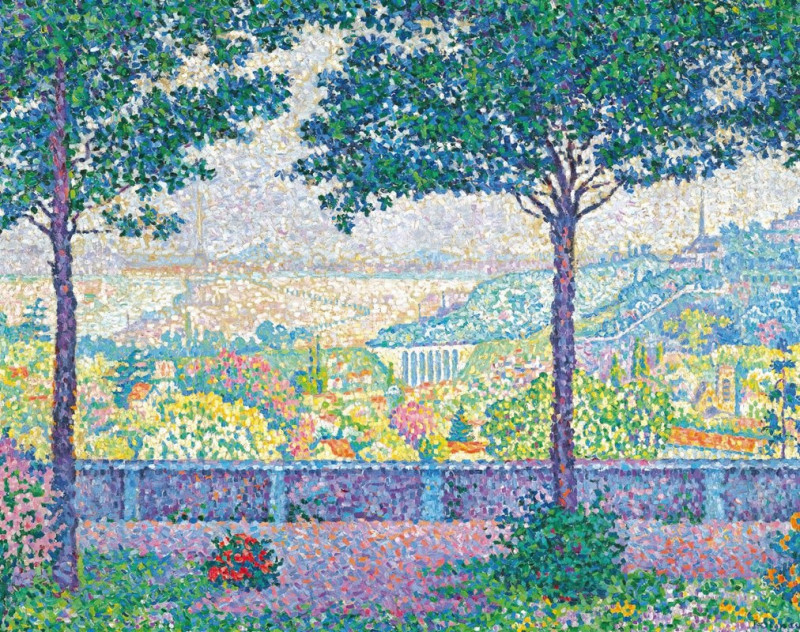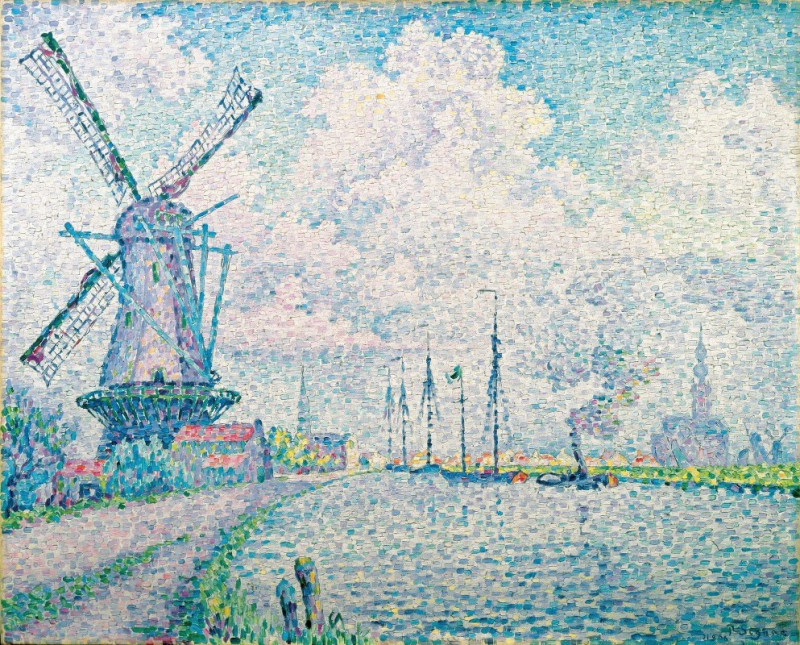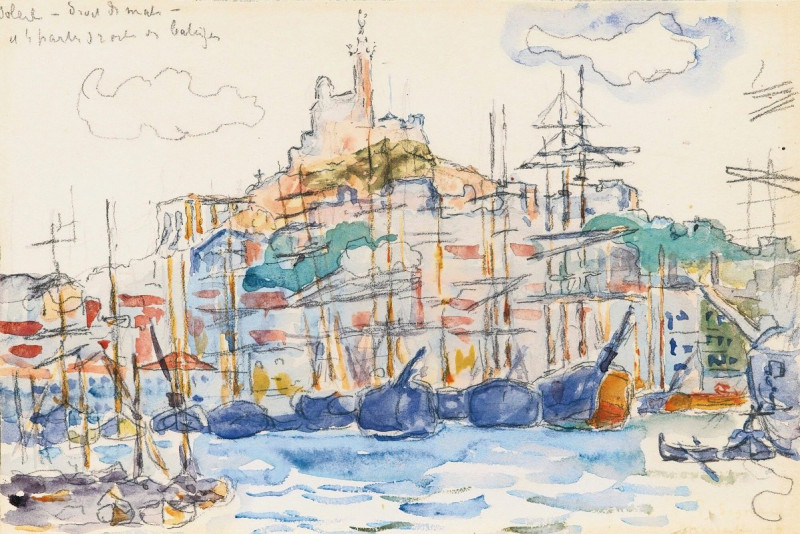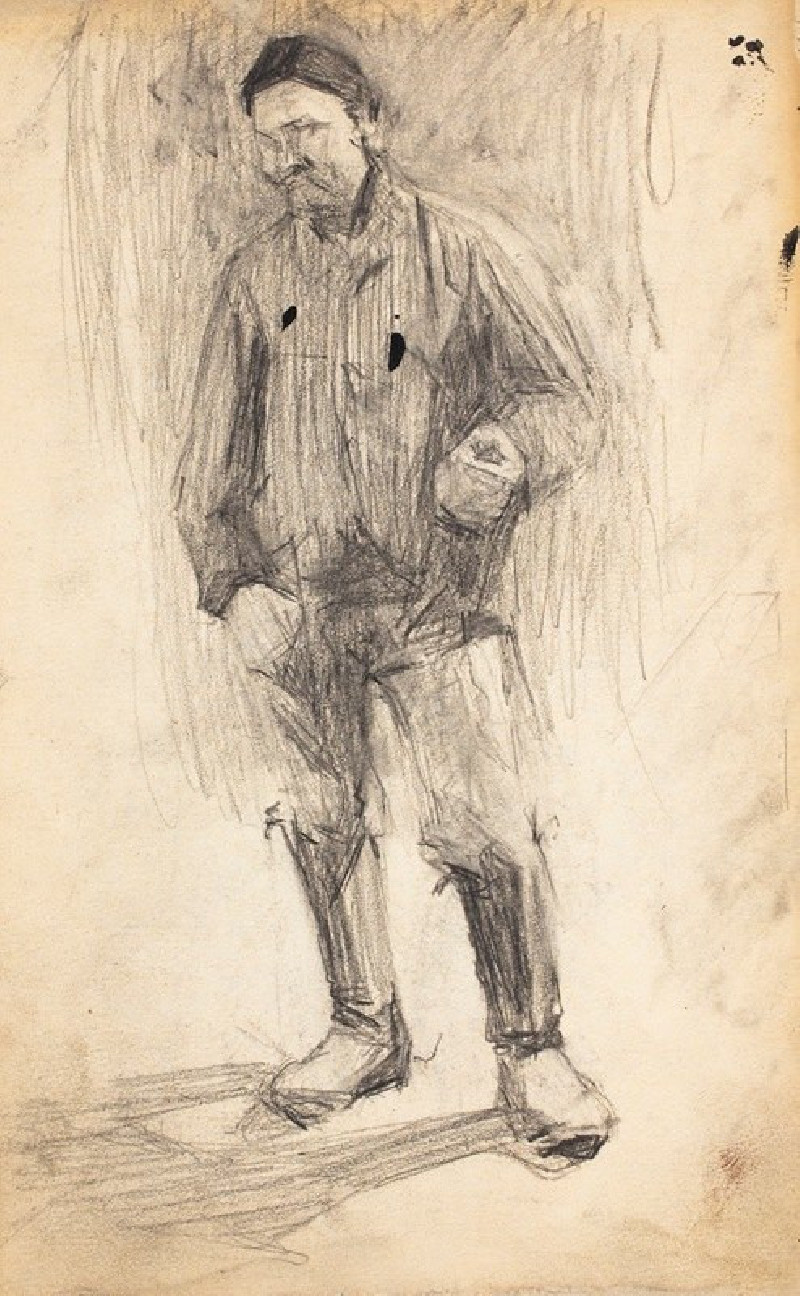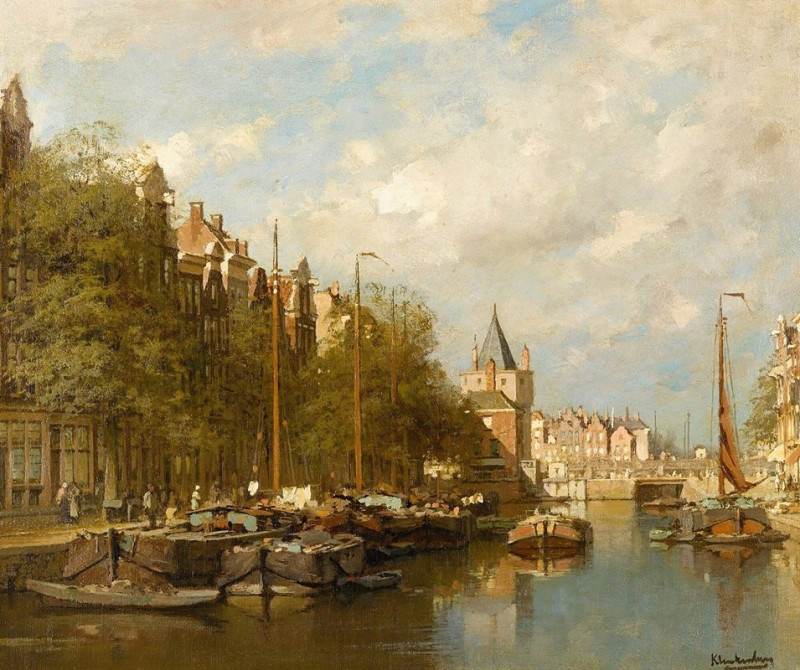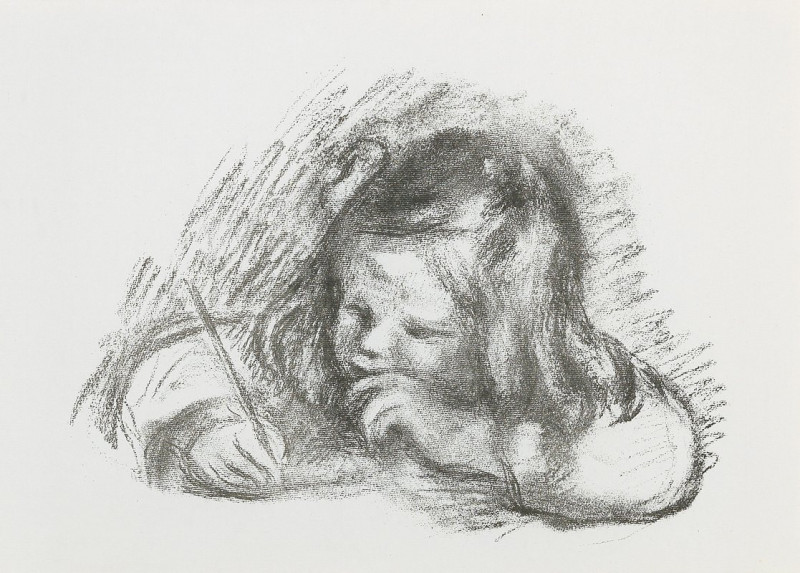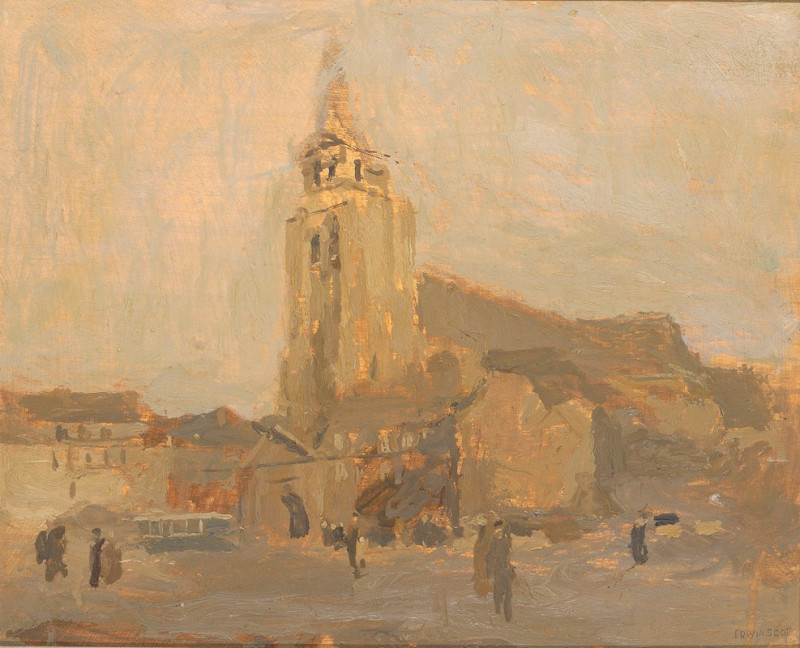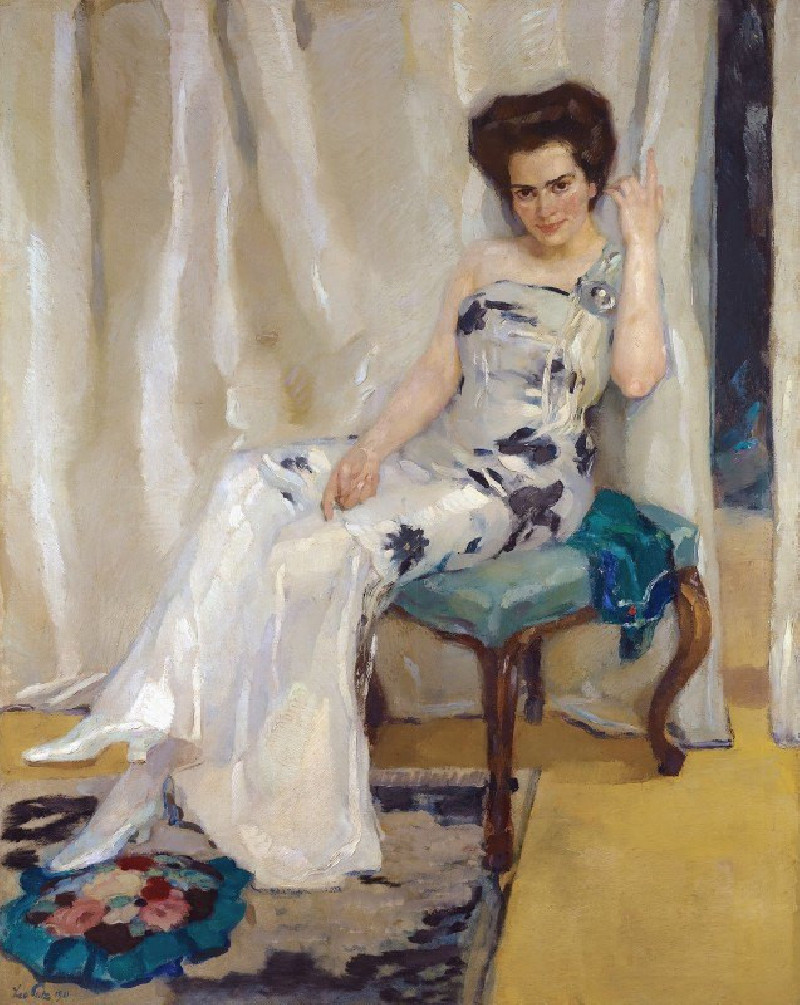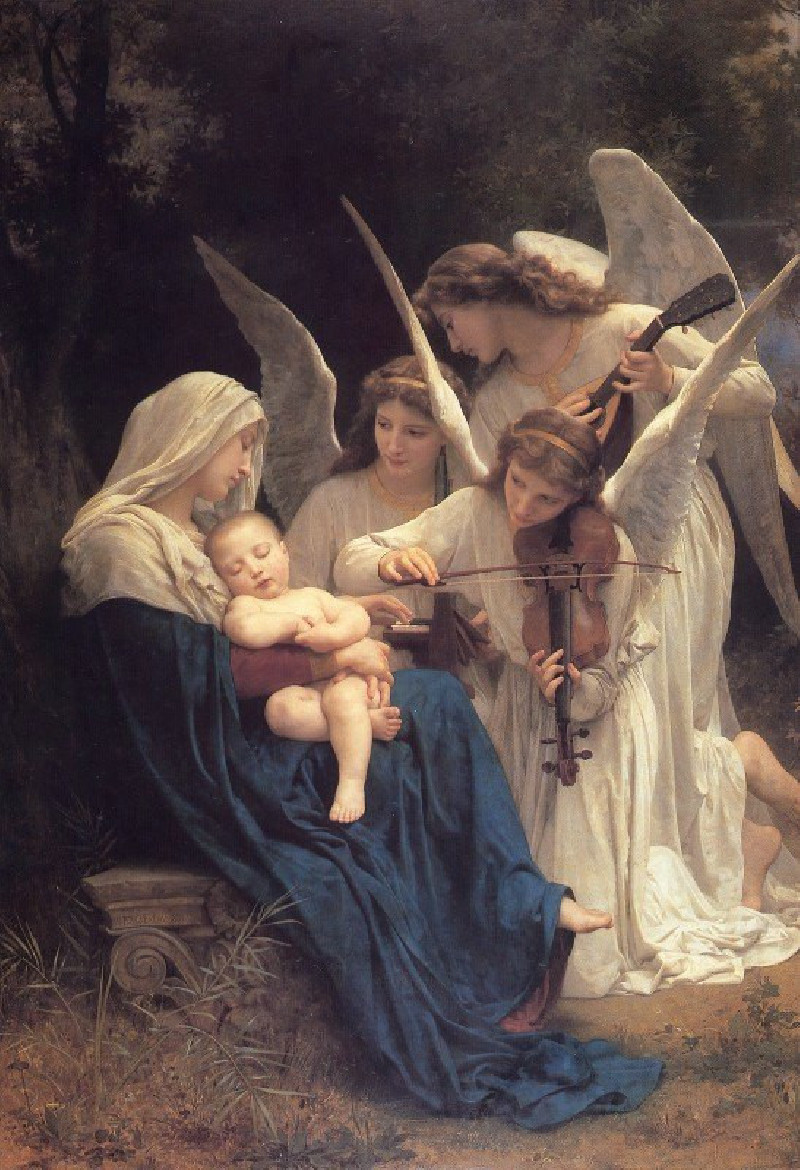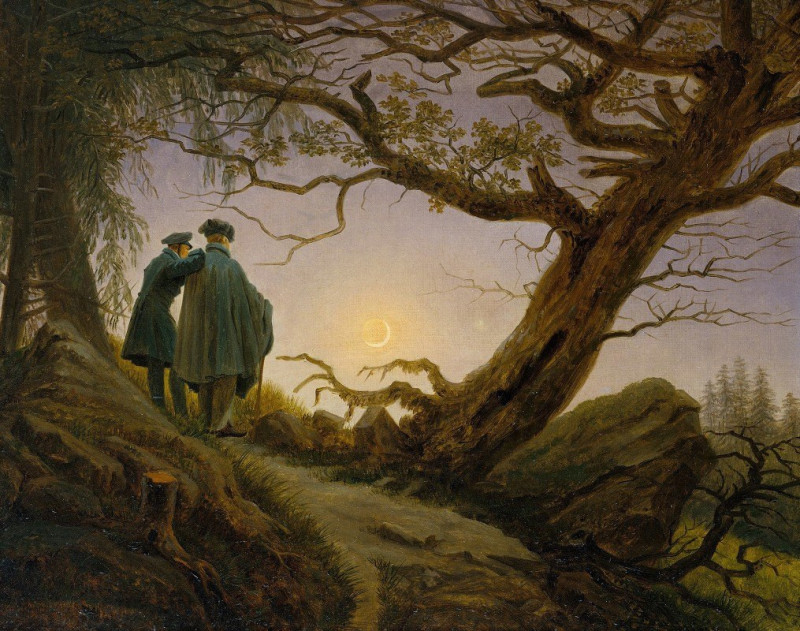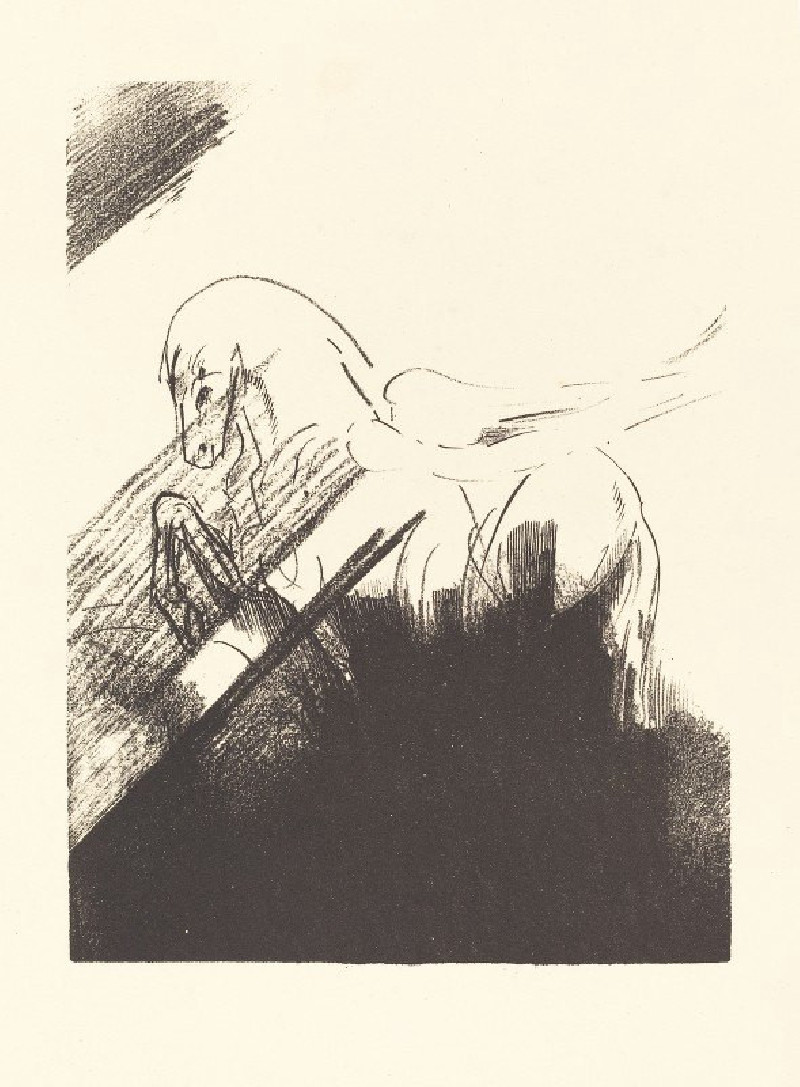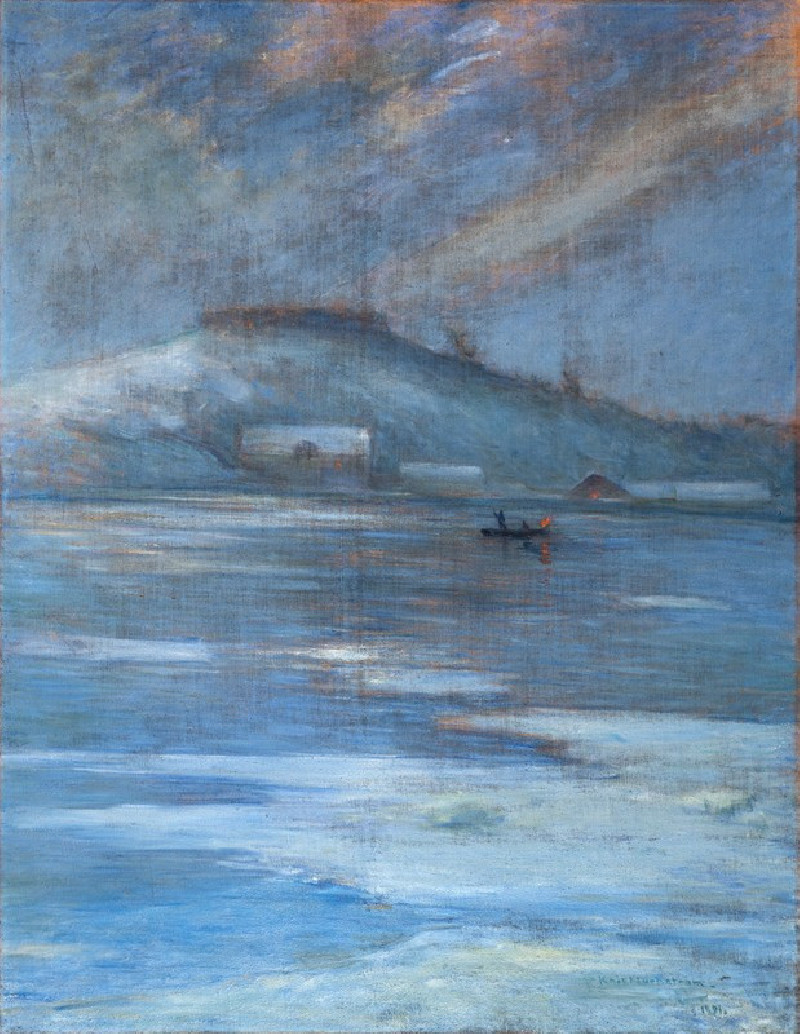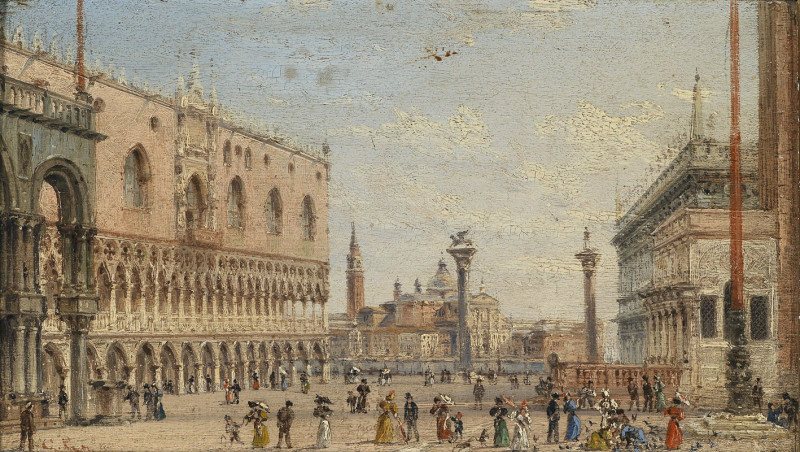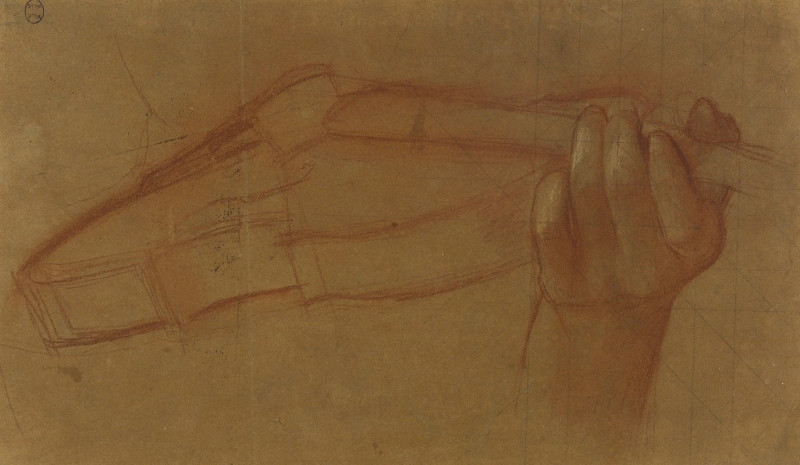La Fête D’asnières (1884)
Technique: Giclée quality print
Recommended by our customers
More about this artwork
Paul Signac's enchanting portrayal of a leisurely afternoon, La Fête D’asnières (1884), captures the vibrant atmosphere of a riverside festival in Asnières, a suburb of Paris. In this stunning example of early Neo-Impressionism, Signac utilizes dappled brushstrokes to infuse the canvas with light and color, showcasing his mastery in conveying the effervescent qualities of light.The painting depicts a lively scene along the shores of the Seine, featuring festivity tents adorned with colorful flags that flutter against a brilliant blue sky. The foreground is dominated by the tranquil pathway that carves through the center, inviting the viewer's eye to wander through the festive environment. On the left, a circus-like tent showcases an equestrian performance, a blur of movement captured in just a few skilled strokes.Signac’s keen eye for detail and color is evident in the way light plays across the scene, from the luminous patches on the path to the subtle reflections in the river. This airy depiction not only resonates with a sense of immediacy and spontaneity but also illustrates the relaxed social mores of the time, where Parisians would often escape to the suburbs for leisure and entertainment.La Fête D’asnières is more than a mere visual record; it is an invitation to experience the joy and simplicity of a sunny day by the riverside, a testament to Signac’s ability to translate transient moments into enduring art.
Delivery
Returns
Paul Signac (1863-1935) was a French Neo-Impressionist painter. Together with Georges Seurat, Signac developed the Pointillism style. He was a passionate sailor, bringing back watercolor sketches of ports and nature from his travels, then turning them into large studio canvases with mosaic-like squares of color. He abandoned the short brushstrokes and intuitive dabs of color of the impressionists for a more exact scientific approach to applying dots with the intention to combine and blend not on the canvas, but in the viewer's eye.

